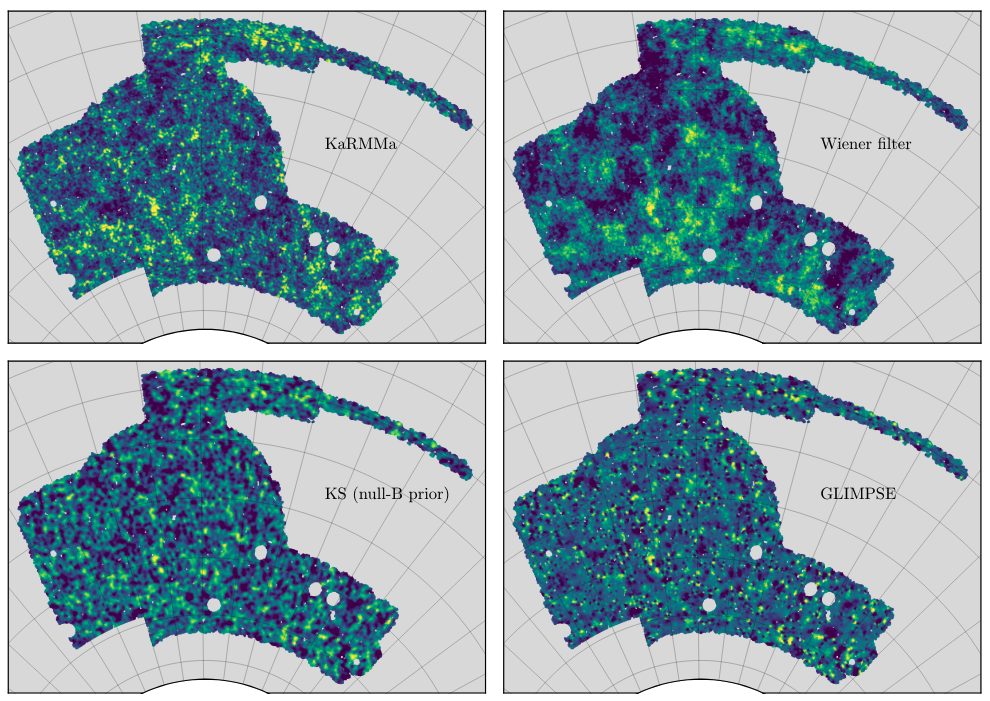Research
Description of my research interests
I am interested in different aspects of data-driven observational cosmology.
Field-level inference for weak lensing data
Standard methods of cosmological analysis rely on using summary statistics to infer cosmological parameters. However, utilizing information from the full-field is necessary to optimally constrain these parameters. We have developed such a field-level inference code (See here) that allows us to extract all the available information from a weak lensing catalogue. We forecast that field-level inference can put 2x stronger constraints on cosmological parameters than usual power spectrum constraints.
As a part of this research program, we have developed KaRMMa, a curved sky forward-modeled mass map reconstruction code (See here and here). In one of our recent work, we used KaRMMa to produce Bayesian mass maps with the Dark Energy Survey weak lensing data (See the figure below).

Generative adversarial networks for fast weak lensing simulations
We have developed a method for producing fast weak lensing simulations using generative adversarial network (GANs). In our physically motivated method, we input lognormal maps into our GAN which then turns it into a simulation quality map (See here). This method will drastically reduce the computational requirements for the analysis with next-generation weak lensing surveys like LSST.
Machine learning based emulators for fast weak lensing and galaxy clustering analysis
I have also developed a machine-learning based emulator (see here) that accelerate 3x2 point cosmological analysis by 1000 times. As a part of the LSST Dark Energy Science Collaboration, we then used this emulator to map out the impact of various systematic effects on 3x2pt analysis with LSST (see here).
My collaborators have extended the machine learning architectures of this emulator and used it to explore other aspects of 3x2 pt analysis with this emulator (See here and here).
Peculiar Velocity analysis in the local Universe:
During my PhD, I studied the peculiar velocity field of the local Universe. This is important for two reasons: i) We can infer the growth rate of structure () from these observations. ii) Peculiar velocities are a source of systematic errors in the measurement of the expansion rate ().
In one of our papers, we obtained constraints on which is competitive with other probes of structure growth (See the figure below).

In another paper, we investigated the role peculiar velocity errors plays in the inference of .
Theoretical early Universe cosmology:
Previously, I have also worked on theoretical aspects of early universe cosmology. We studied a modification to gravity called Cuscuton in the early universe and proposed an alternative to Inflation based on it.